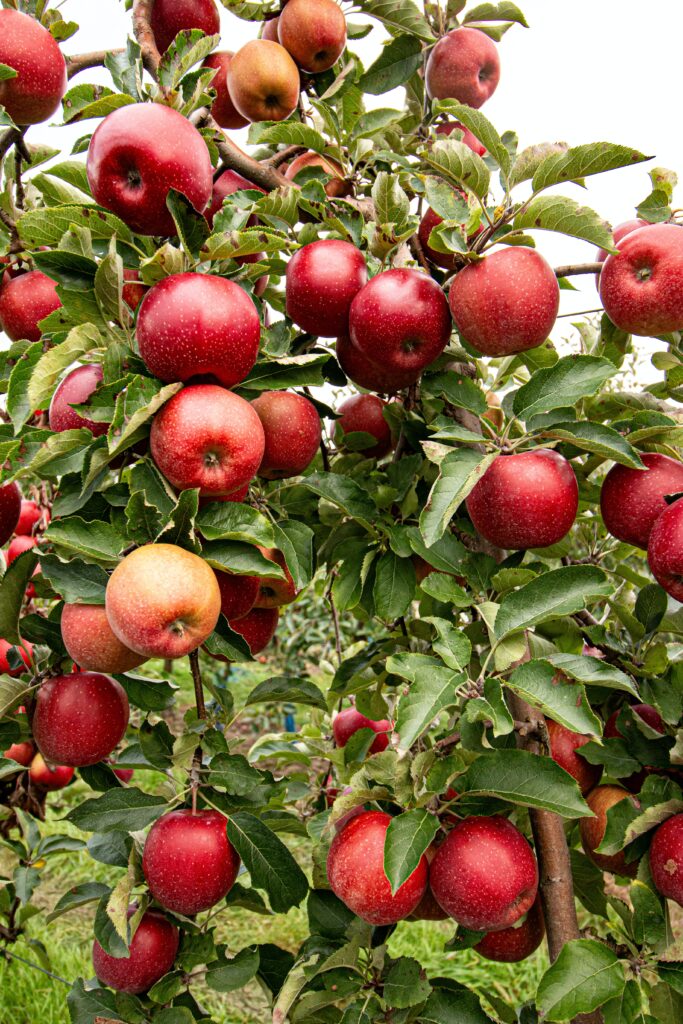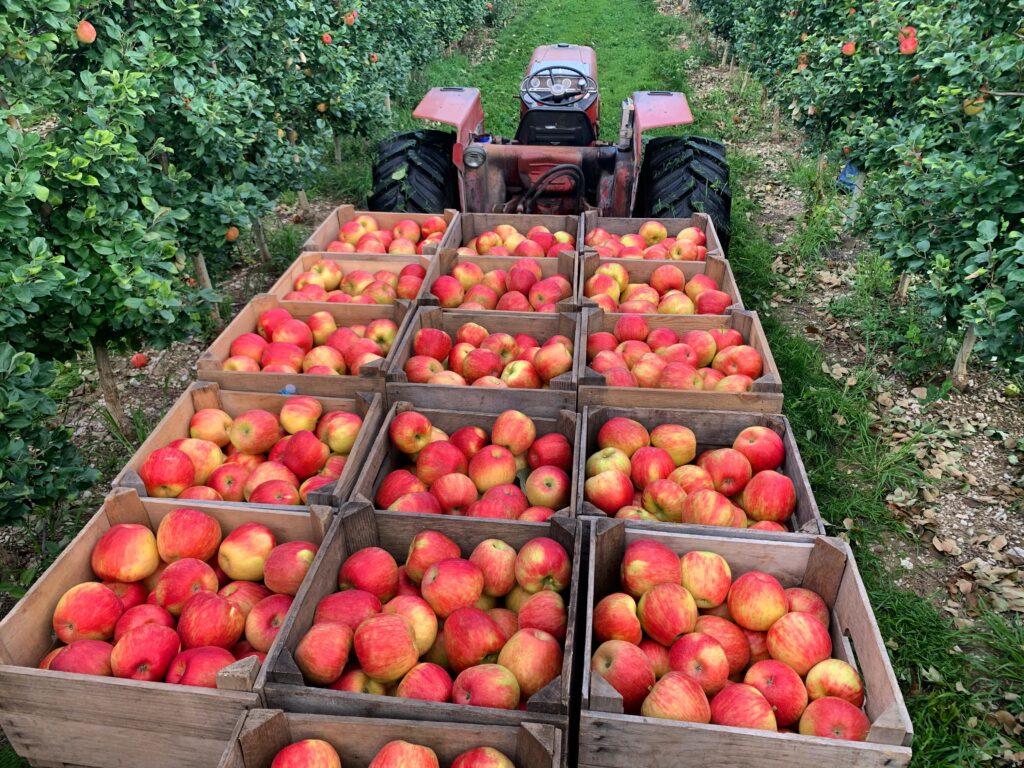
Is Apple Production Right for Your Land?
According to the UW-Extension, apples are the most widely planted fruit tree in Wisconsin. Who wouldn’t like to step out the door and pick apples from their own trees?
For anyone thinking of growing apples, the first question to resolve should be site selection. Growing Apples in Wisconsin suggests that the ideal site for apple trees is on a gentle slope so that cold air can settle into adjacent lower areas. The bottoms of valleys are “frost pockets” and may be several degrees colder than nearby hillsides. And hilltops are undesirable as they can be very windy.

Apple trees grow best in a fertile, sandy loam, though they will grow in all but the rockiest or heavy-clay soils. They don’t like wet roots, so good internal water drainage is important. The soil should have a pH between 6 and 7, and apple trees require sun at least 3/4 of the day.
Before taking on an orchard, or even a handful of trees to supply friends and family, you need to consider how much time you are willing to spend tending them. Even if you have a good spot, apples are not a particularly easy crop to grow, especially if you want unblemished fruit.
“Apples are attacked by a wide group of insects and diseases that can reduce the health of the tree and also attack the fruit directly — creating holes, spots and deformities,” says Chris McGuire, co-owner of Two Onion Farm near Belmont. ”It’s a good idea to be clear about what your goals are. An average backyard gardener is not going to devote the time and attention to controlling the pests that a commercial grower must.”
Growing Apples in Wisconsin includes a chart that details when to monitor for insects and disease and how to react — such as hanging pheromone traps in early April to count spotted tent form leaf miners; spraying for green fruit worm at petal fall; applying sprays or using floating row covers as soon as adult Japanese beetles appear in June and July; and treating caterpillars that can damage fruit and foliage throughout the season as needed.
Another organic apple grower, Rami Aburomia, owner of Atoms to Apples near Mount Horeb, grows about 65 varieties on 4-1/2 acres. “Commercial apples are grown in high density these days — about 1,200 small trees supported by trellises per acre. It looks a lot different from a traditional orchard,” he says.
Both growers have taught apple growing in the past and have advice for those starting out. The size of apple trees is determined by the root stock on which particular species are grafted. “Short, narrow trees are easier to prune and harvest,” says Aburomia. “And the apples are exposed to more air and light.”
The small trees used by commercial growers are grown on dwarf root stock. “It can produce fruit in the second or third year,” says Miller. “With a full-size tree, you might wait seven to eight years, and 15 years for full production. For a home owner’s perspective, if you have five or six trees for variety, dwarf trees produce a bushel or two from each, and that is often enough for one household.”

As to which types of apples to grow, both growers suggest selecting a range of varieties that will ripen throughout the harvest season. “Conditions can be better for some varieties over others in a given year, and growing several varieties means you will get some good fruit every year,” says Aburomia. “And I would pick scab-resistant varieties.”
“Liberty doesn’t get much cedar rust. Cedars on or even near your property are likely to spread cedar rust to apple trees,” Aburomia warns. He suggested Pristine as an apple with good disease resistance. “Some people have had good luck with Williams Pride and Empire. Heritage varieties of apples are harder to grow, but I like golden russet, Ashmead’s kernel and Winesap.”
“You can buy trees from local garden centers,” adds Miller, “but you are better off going to an internet nursery with more selection, and they will specify dwarf, semi-dwarf or full size.”
Pruning is a skill every apple grower needs to develop. Variety, root stock and system of orchard layout all determine how to prune. “Pruning in the winter invigorates the tree,” says Aburomia. “The more you prune a tree, the more invigorated the tree will be, but you actually want a tree to be calm and fruitful. If you have land with apple trees that are all overgrown, getting them back into production will be tricky. It can’t be done in one year. Over time you can make bigger cuts with a chain saw to open the tree up, and then smaller cuts with loppers to get it into the shape you want.”
Apple trees definitely need to be protected from deer grazing, and the trunk must be protected from rodents who will chew the bark for food during its first years. And as they grow, the trees may need support.
Here are a number of good sources to learn more about growing apples in Wisconsin.

Aburomia calls the book The Organic Apple Grower by Michael Phillips a great reference for information about pests and diseases, whether you are growing organically or not.
Growing Apples in Wisconsin, is a concise overview of growing apples from site selection, cultivar and rootstock selection, planting, care, harvesting and storage.
The University of Wisconsin has a library of printed materials that can be found at.
The Wisconsin Fresh Fruit and Vegetable Conference, will be held January 29-31, 2023 in Wisconsin Dells.
The Organic Fruit Growers Association offers some field days and a retreat.
Midwest School for Beginning Apple Growers has provided seminars in the past.This program is in transition, and may soon be offered through another organization.
